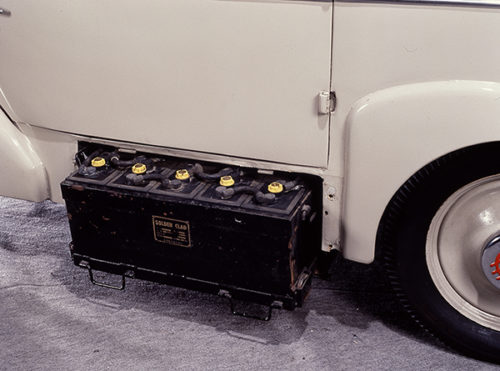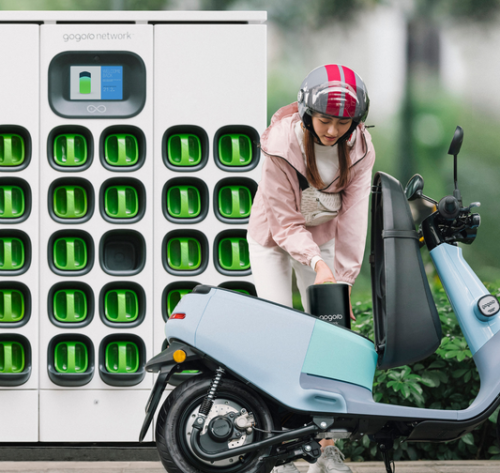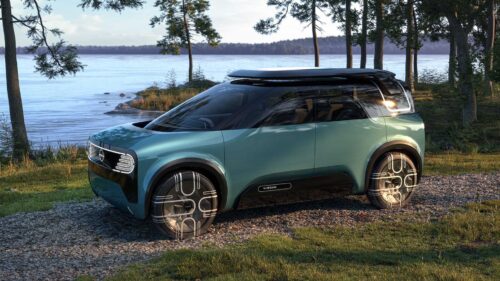I’ve mentioned on this blog before the 1947 Nissan Tama.
It has several important historical characteristics that make it look like something very modern even today.
- Designed for the switch to a peacetime economy
- Designed by 200 Tachikawa Aircraft employees
- Extreme shortage of gasoline
- Top speed of 35 km/h (22 mph) and a cruising range of 65 km (40 miles) on a single charge
- Passenger car and truck models
- Battery compartment in the cabin floor, with two “bomb bay” doors on either side
- Battery cases on rollers so used batteries could be quickly exchanged with fresh ones
I bring it up again as people lately have been saying they wish they had a quick way to replace their electric car batteries instead of using a gasoline-pump like attachment for slow (complicated and dangerous) charging.
That is what Tama offered in its “bomb bay” like doors and energy swap cases:

Well I guess that means look at 1947 for the answers from war-time aircraft engineers who understood the significance of rapid replacement, refuel turnaround and similar efficiencies.
Of course it wouldn’t happen today for cars without someone over-hyping automation. The Japanese in fact tried outsourcing battery swap to a 2009 Silicon Valley startup, but it arguably died due to massive fraud (*cough* Tesla *cough*) polluting the market.
The Japanese Ministry of Environment has invited Better Place to build a battery exchange station in Japan and engage with the country’s carmakers.
The Chinese notably refer to the brilliant 1940s Japanese model of drive-through EV battery-swapping as being “killed by Tesla years ago”.
That makes it even more tempting to get excited by a Taiwanese company GoGoro as they have slick marketing calling their products “reimagined”.
It’s basically the most distributed and modern take yet on what came so long before the ill-conceived centralized (and often fraudulent — Tesla chargers were dirty diesel engines) “plug-in” market that’s slow, dangerous and bad for batteries.

We’re essentially going back to the beginning, which is good for modern electric vehicles. What would a Tama look like today? Here’s the latest Nissan concept.

The most exciting thing about Japanese innovation in stop-and-swap transit models is that any home anywhere could be a supplier. It’s much more attractive and sensible to have someone grab a power pack to go than to hook up to any charger.
If I really think outside the box, literally, then the Nissan car full of batteries can be the swappable battery for a house (like Russian nesting doll batteries). Roll your battery tray into the car and power your car off plugin. Then roll the battery car into the garage and power your house off grid.
Fun fact, since 2013 the Nissan LEAF was engineered to send power (Bidirectional EV as specified in UL 9741), like a giant house battery on wheels.
And even that model goes back centuries.
Imagine hanging a small sign outside your home that says “power cell available”, like the hanging red lamp of the Japanese Izakaya.
…many opted to simply make rice at home and purchase side dishes from outside vendors called niuriya (“simmered foods shops.”). Around the year 1750, “seated sake shops” and “simmered foods shops” combined into a new business model, the “simmered foods seated sake shop” (niuri izakaya). The cumbersome term would soon be shortened to “izakaya.”
That’s a hint at the universal services and interoperability/pluggable sharing markets that have led everyone for centuries towards putting trust in any modern transport (car), storage (hotel), or processing (restaurant).
Interesting to historians may be how battery replacement goes back even further to an ancient system of caravanserais spaced 20 miles apart on Persian highways, where a tired horse or camel could be quickly refueled or exchanged with a fresh one.
…Middle East, Central Asia, and North Africa would have been much more difficult if not for the caravanserais… centers for the exchange of goods and culture…
Thinking of transit engineering problems as new just because some minor aspect of it is new, prevents us from seeing the millennia of knowledge right in front of our eyes. And on that note, information security concepts all are basically derived from transit technology safety practices (transport, store, process).